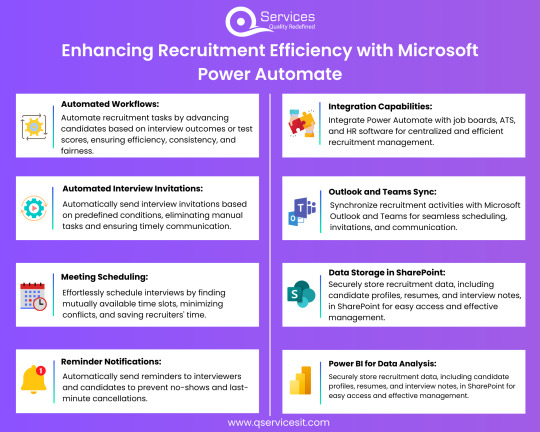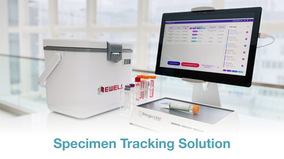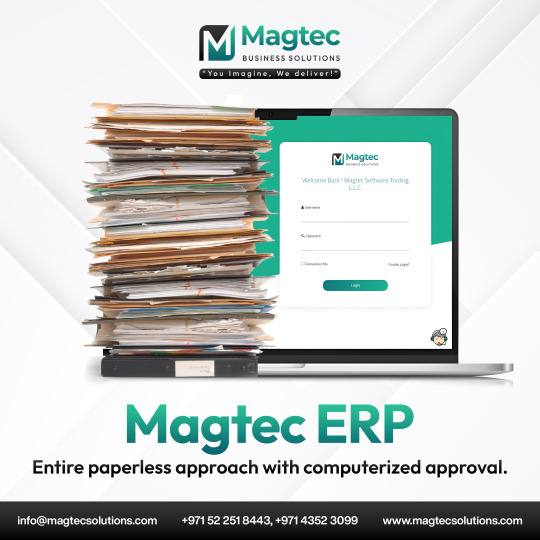#Automated Workflows
Explore tagged Tumblr posts
Text
Streamline Operations with One Call Ticket Management Solutions
Discover how Norfield's One Call Ticket Management solutions can revolutionize your operational workflow. Designed to ensure accuracy and efficiency, our platform streamlines the ticketing process, helping you manage locate requests effortlessly. With automated workflows, real-time updates, and easy integration, you’ll minimize errors and enhance productivity across your team.
Whether you're in utility management, excavation, or construction, our system ensures compliance with safety regulations while reducing project delays. Norfield's robust tools enable you to handle high volumes of tickets with precision, saving you time and resources.
Explore our intuitive interface and see how it transforms ticket tracking, communication, and reporting, all in one place. One Call Ticket Management by Norfield is the ultimate solution for businesses that prioritize safety, efficiency, and success.
Visit NorfieldDP.com today and learn how you can simplify your ticket management process like never before.
#One Call Ticket Management#ticket management solutions#Norfield ticketing software#streamlined operations#locate request management#ticketing process efficiency#automated workflows#safety compliance#utility management tools.
0 notes
Text

Microsoft Power Automate
Enhance your recruitment efficiency with Microsoft Power Automate. Discover how automation can streamline your hiring process, from candidate sourcing to onboarding.
#microsoft power automate#power automate microsoft#automated workflows#power automate consulting services#it staff augmentation#it staff augmentation services
1 note
·
View note
Text
Laboratory Management 101: Best Practices for Success

When it comes to running a successful laboratory, effective Laboratory Management is key. In this blog post, we'll explore essential best practices for optimizing laboratory operations and ensuring quality outcomes. From Specimen Tracking to Automated Workflows and Instrument Integration, we'll cover everything you need to know to excel in laboratory management.
Specimen Tracking is a critical aspect of laboratory operations, ensuring accurate identification and handling of specimens throughout the testing process. Implementing robust specimen tracking systems enables laboratories to track the movement of specimens from collection to analysis, minimizing errors and ensuring reliable results. Utilize barcode technology and electronic tracking systems to streamline specimen management and enhance traceability.
Automated Workflows are essential for maximizing efficiency and productivity in the laboratory. By automating routine tasks such as sample processing, result interpretation, and data entry, laboratories can minimize manual errors and accelerate turnaround times. Invest in laboratory management software with built-in workflow automation capabilities to streamline operations and optimize resource utilization.
Maintaining Quality Control is paramount in laboratory management to ensure accurate and reliable test results. Implement comprehensive quality control protocols and regularly monitor performance indicators to identify and address deviations promptly. Utilize proficiency testing programs and internal quality assurance measures to validate testing accuracy and maintain compliance with regulatory standards.

Instrument Integration plays a crucial role in laboratory efficiency and data integrity. Integrating laboratory instruments with the laboratory management system enables seamless data transfer and real-time result reporting. Choose laboratory management software that supports instrument integration protocols such as HL7 and ASTM to streamline data exchange and enhance interoperability.
Real-Time Reporting capabilities are essential for delivering timely and actionable insights to healthcare providers and patients. Implement laboratory management software with real-time reporting features to enable instant access to test results and critical findings. Utilize customizable reporting templates and dashboards to tailor reports to specific user needs and facilitate data-driven decision-making.
In conclusion, mastering Laboratory Management requires a comprehensive understanding of best practices and principles. By prioritizing Specimen Tracking, Automated Workflows, Quality Control, Instrument Integration, and Real-Time Reporting, laboratories can optimize operations, improve efficiency, and deliver high-quality testing services to meet the needs of patients and healthcare providers.
0 notes
Text
Construction Automation: Types, Benefits and Future Outlook
Introduction In recent years, the construction industry has lagged behind manufacturing in adopting automation technologies. However, the current landscape presents an opportune moment for change. The construction sector’s trajectory towards a digital transformation is now marked by the increasing integration of automated technologies. From streamlining digital design and analysis processes to…

View On WordPress
#Automated Workflows#Autonomous Construction Equipment#Benefits of Construction Automation#Construction Automation#construction industry#Data Collection#digital transformation#Efficiency and Production#Future Outlook#Housing Crisis#integration#Job Creation#Off-Site Automation#On-Site Automation#Predictability and Quality Standards#Resource Scarcity#Robotics Adoption.#Robotics in Construction#Safety in Construction#Scalability in Construction#standardized components#Sustainability#sustainability in construction#Workforce Shortfalls
0 notes
Text
Maximizing Revenue: AuxDrive's Game-Changing Strategies for Punctual Payments

In the dynamic world of auto dealerships, revenue isn't just about sales; it's about managing the intricate dance of payments. AuxDrive, a trailblazer in the industry, has devised strategies that go beyond transactions, ensuring a harmonious flow that minimizes late payments and maximizes revenue.
Driving the Future: An Introduction to AuxDrive's Vision
At the heart of AuxDrive's approach is a vision that transcends traditional payment processes. It's not just about getting paid; it's about orchestrating a seamless experience where payments align with the rhythm of each dealership's unique operational beat. This vision positions AuxDrive as a strategic partner in the financial success of auto dealerships.
Understanding the Landscape: The Challenge of Late Payments
Late payments can disrupt the financial flow of any business, and auto dealerships are no exception. AuxDrive, with its finger on the industry's pulse, recognizes this challenge and addresses it head-on. The first step in overcoming a hurdle is understanding its contours, and AuxDrive dives deep into the complexities of late payments in the auto sector.
Tailored Solutions: AuxDrive's Adaptive Approach
There is no one-size-fits-all solution in the world of payments, and AuxDrive understands this implicitly. Its strategies are not pre-packaged; they are tailored to suit the individual needs and challenges of each dealership. Whether it's setting up personalized payment schedules or implementing reminders, AuxDrive's adaptive approach ensures that late payments become the exception, not the norm.
Efficiency Through Automation: Streamlining Payment Processes
The secret sauce of AuxDrive's success lies in its embrace of cutting-edge automation. By streamlining administrative processes, from invoicing to payment reminders, AuxDrive reduces the friction in the payment journey. This not only saves time for dealership staff but also enhances the efficiency of the entire payment ecosystem.
The Human Touch: AuxDrive's Commitment to Customer Relationships
In the world of technology, AuxDrive doesn't forget the human element. Beyond the algorithms and automated processes, AuxDrive is committed to nurturing strong customer relationships. Clear communication, transparent processes, and a genuine understanding of the challenges faced by dealerships set AuxDrive apart as a partner invested in the success of its clients.
Conclusion: AuxDrive, Where Revenue Maximization Meets Operational Harmony
In conclusion, AuxDrive isn't just a payment processing solution; it's a strategic ally in the pursuit of financial success for auto dealerships. Its strategies, rooted in understanding, adaptability, automation, and a commitment to relationships, position AuxDrive as a driving force in the effort to minimize late payments and maximize revenue. As dealerships navigate the complexities of the industry, AuxDrive stands ready to steer them toward a future where financial success is not just a goal but a tangible reality.
#business#fintech#business strategy#payment systems#payment services#payment solutions#merchant services#finance#high risk merchant account#customerexperience#autodealership#automated workflows#workflow automation#workflow#payment collection#debt collection#debt collector
0 notes
Text
We provide a full-fledged Customer relationship Management suite for our clients to process their business strategies and customer services in a more manageable manner. We invite you to accelerate your business with our tailor-made MS Dynamics 365 services and enhance your Sales, Marketing, and Customer Integration capabilities.
1 note
·
View note
Text
Common challenges with automated workflows

Automated workflows serve as a valuable resource that can assist businesses in saving time and reducing costs, while simultaneously enhancing accuracy and consistency. Furthermore, they provide employees with the freedom to concentrate on more strategic tasks. Nevertheless, there are several common hurdles that businesses encounter when integrating automated workflows.
Insufficient support from stakeholders
Gaining support from all stakeholders involved presents a significant challenge in implementing automated workflows. This entails securing the buy-in of employees who will be utilizing the workflows, managers responsible for overseeing them, and IT personnel tasked with their implementation. Effectively communicating the advantages of automated workflows to all stakeholders and addressing any concerns they may have is crucial.
Complexity
The design and implementation of automated workflows can be intricate, particularly when they involve multiple departments or systems. Thoroughly planning the workflow prior to automation is vital. Additionally, it is necessary to ensure the availability of appropriate tools and resources for successful workflow implementation.
Inadequate data
Successful automated workflows rely on accurate and relevant data. Insufficient data or inaccuracies in the data will hinder the effectiveness of workflows. Establishing a robust data management system prior to automating workflows is essential.
Security
Automated workflows introduce potential security risks due to automated access to sensitive data and systems. Considering the security implications of workflow automation is crucial. Implementing appropriate security measures to safeguard data and systems is equally important.
Change management
Automated workflows entail a significant change in the operational procedures of a business. Managing this change effectively is paramount to minimize disruption. Key steps include communicating the benefits of the change to employees, providing comprehensive training on the utilization of new workflows, and offering support during the transition period.
Overcoming the Challenges of Automated Workflows
The challenges associated with automated workflows can be overcome through meticulous planning, implementation, and effective change management. By addressing these challenges head-on, businesses can fully reap the benefits offered by automated workflows.
Here are some additional recommendations for overcoming the challenges of automated workflows:
Begin with small-scale implementation: Rather than attempting to automate the entire business at once, start with a simple workflow and gradually expand upon success.
Garner support from stakeholders: Ensure that all individuals affected by the automated workflow are onboard before initiating the implementation process.
Utilize a workflow management tool: Employing a workflow management tool simplifies the design, implementation, and management of automated workflows.
Thoroughly test workflows: Prior to deploying automated workflows organization-wide, conduct comprehensive testing to verify their functionality and efficiency.
Monitor workflows: Once automated workflows are in place, ongoing monitoring is essential to ensure their continued effectiveness.
By adhering to these suggestions, businesses can conquer the challenges associated with automated workflows and fully harness the numerous benefits they provide.
0 notes
Text

maybe i dont have the 'growth mindset' necessary to work in the industry but my first thought upon reading this was "kill yourself"
#okay i admit i dont really know how theyre incorporating “AI” into the workflow but as of now i cant imagine its better than automating#like yeah you just automate your workflow. everyone does it. why “AI”.#its just extremely annoying to see even high level educational institutions just throw this shit in. bro its been out for like 3-4 years...#everything looks like a nail type shit
244 notes
·
View notes
Text

i've combined myself a new workflow blogging automation... 👀 prepare for massive queues.
8 notes
·
View notes
Text

Magtec ERP: Your one-stop solution for a paperless and efficient business. Say goodbye to piles of paperwork and hello to streamlined approvals!
#magtec#erp#paperless#efficient#business#streamlined#approvals#digitalization#productivity#automation#workflow#solutions#technology#innovation#digitaltransformation#efficiency#documentmanagement#processimprovement#businessmanagement#officeautomation#digitaloffice#smartbusiness#cloudsolution#businesssoftware#workplaceefficiency#digitalrecords#magtecsolutions
2 notes
·
View notes
Text
i fucking hate how easily youtube can crash your computer if you watch videos for too long. what do you mean i have manually clear the cache every two hours fix your fucking website!!!
#acorn speaks#vent post#god!!!!! i hate this sm i am trying to WORK#i lose fifteen minutes of work every goddamn time which yeah tiny violin but. ugh it keeps HAPPENING its just so frustrating#and i canNOT find an extension or whatever to automate it :(#ill just have to set a timer and do it manually i guess. rip my workflow.#im going to go get a snack so i wont be so mad. fuck you youtube
5 notes
·
View notes
Text
Streamline Your DevOps Workflow: Automate Code Builds & Testing with AWS CodePipeline & CodeBuild!
Harness the power of automation to accelerate your development process and ensure code quality.
2 notes
·
View notes
Text
In the fast-moving digital world, enterprises cannot rely on basic software alone. They need powerful, responsive applications that streamline operations and support growth. Business application development is important in helping companies stay competitive, reduce manual tasks, and improve decision-making across departments.
This blog explores how custom business applications can change the way your company works, especially when using Microsoft’s set of automation tools. Microsoft Power Automate consultants help organizations create solutions that eliminate repetitive processes and improve productivity, from managing workflows to automating approvals.
Whether you're a small business or a growing organization, using Microsoft Power Automate services can greatly improve efficiency. These services connect your existing systems like SharePoint, Dynamics 365, Teams, Outlook, and hundreds of third-party apps, allowing data to flow smoothly between them. This eliminates the necessity of manually entering data or switching between systems. The blog also explains how teams can more easily create applications without much coding, thanks to low-code platforms. With tools like Power Automate and Power Apps, businesses can quickly launch apps for internal use, HR management, inventory control, finance workflows, or customer service improvements.
Additionally, the article shares real-life examples where automation has helped businesses reduce costs, improve accuracy, and grow operations. You’ll also learn how working with experienced Microsoft Power Automate consultants can help make the implementation process smoother, avoiding common challenges and ensuring the solution fits your business needs.
If you want to understand how business application development and the right automation tools can give your company an advantage, this blog is a great read. It offers insights into current trends and outlines the steps to get started with Microsoft Power Automate services.
Stay ahead of the competition and learn how to make the most of business applications that work efficiently, not harder.
#hire microsoft power automate consultants#workflow automation solutions#microsoft power automate consultants#power automate solutions provider#microsoft power automate services#power automate consulting providerpower automate consulting services#power automate development services
0 notes
Text
Accelerate into the future with AuxDrive! 🚗✨ Discover how auto dealerships are revolutionizing payment collections through seamless digital solutions. Embrace efficiency, enhance customer experience, and stay ahead in the game. Explore the driving force at AuxDrive.net. 🌐💳 #autotech #digitalpayments #paymentcollection #innovationindriving #auxdrive #workflowautomation #automatedworkflow
#business#fintech#business strategy#payment systems#payment services#payment solutions#merchant services#finance#high risk merchant account#customerexperience#autodealership#payment collection#automated workflows#workflow automation#workflow#payment gateway#payment processing#payments
0 notes
Text
Master Data Governance – Effective Procedures for Enhanced Outcomes
In the digital age, where data drives almost every business decision, the need for well-structured and reliable information has become a strategic imperative. At the core of this transformation lies Master Data Governance (MDG) — a framework of processes, policies, and technologies designed to ensure that an organization’s critical data is accurate, consistent, secure, and effectively managed across the enterprise.
Master Data Governance is not merely about cleaning data or fixing errors. It is a holistic discipline that involves the creation, maintenance, and oversight of master data such as customers, products, suppliers, materials, and assets. These are the foundational elements that fuel operations, analytics, and digital workflows. Without proper governance, master data becomes fragmented, duplicated, and untrustworthy, leading to operational inefficiencies, compliance risks, and missed business opportunities.
To implement effective MDG, organizations must adopt a well-defined set of procedures that ensure data quality is not just a one-time effort but a continuous process. These procedures often begin with data discovery and profiling, which help identify inconsistencies, gaps, and duplications in the existing data landscape. Following that, organizations establish data standards and naming conventions, aligned with international taxonomies and business rules, to create a uniform structure across systems.
Once the standards are in place, data stewardship roles must be defined — assigning accountability for data quality to specific business users and departments. These stewards work closely with IT to ensure that governance policies are embedded into daily workflows. Technologies such as workflow automation, data validation rules, and approval mechanisms become essential tools to maintain control over data creation and modification processes.
One of the critical enablers of successful master data governance is system integration. By linking governance tools with ERP platforms like SAP, Oracle, and Microsoft Dynamics, organizations can ensure that data standards are applied at the point of entry and remain consistent across the entire ecosystem. This leads to better reporting, reduced errors in transactions, and improved collaboration across departments.
Another vital component is data monitoring and reporting. Organizations need to track key performance indicators (KPIs) such as data completeness, accuracy, and timeliness to evaluate the effectiveness of their governance efforts. These insights not only guide improvements but also demonstrate the tangible value of data governance to leadership teams.
The outcomes of strong master data governance are both operational and strategic. On one level, businesses gain efficiency, reduce costs, and improve compliance. On another, they build a robust foundation for advanced initiatives such as artificial intelligence, analytics, digital twins, and automation. Clean and governed master data becomes the engine that drives innovation.
Ultimately, Master Data Governance is not a one-time project — it is a continuous journey. It requires commitment from leadership, collaboration across business and IT, and the right blend of people, processes, and technology. Organizations that embrace MDG as a core business function position themselves to not only survive but thrive in a data-centric world.
#Master Data Governance#Data Quality Management#Data Stewardship#Workflow Automation#ERP Integration
0 notes
Text
Understanding Workflow Automation: A Technical Deep Dive
Introduction:
Today, it has become common to see more and more firms engage workflow automation to manage business operations more efficiently and minimize mistakes in their operations. Workflow automation refers to the execution of tasks, forwarding of information, or carrying out processes without human interaction with the use of technology. In addition to speeding up task completion, the automation approach assists in the delivery of consistent and accurate outcomes in a multitude of business functions.
What is Workflow Automation?
Workflow automation is the software mechanism of using the automatic flow of tasks, documents, and information across work-related activities based on defined business rules. This approach ensures that business processes are streamlined, consistent, and efficient.
Key Components of Workflow Automation Systems:
Process Definition Environment:
This is a graphical interface that allows users to model and design workflows. Tools like Business Process Model and Notation (BPMN) provide standardized symbols to represent various tasks and decision points within a process.
Workflow Engine:
The core of the automation system, the workflow engine interprets the process definitions and manages the execution of tasks. It ensures that tasks are assigned, notifications are sent, and business rules are enforced.
Integration Layer:
Modern workflows often require interaction with multiple systems. The integration layer facilitates communication between the workflow engine and other enterprise applications, databases, and services through APIs or middleware.
User Interface:
A platform where users can interact with the workflow system. This interface allows users to monitor progress, provide inputs, and manage tasks assigned to them.
Technical Mechanisms Behind Workflow Automation:
Task Sequencing and Routing:
Tasks within a workflow are sequenced based on predefined rules. The routing mechanism directs tasks to the appropriate users or systems, ensuring that each step is executed in the correct order.
Event Triggers:
Workflows can be initiated or altered based on specific events, such as the receipt of a document, completion of a task, or a particular date and time. Event-driven architectures enable workflows to respond dynamically to changing conditions.
Conditional Logic:
Incorporating if-else conditions allows workflows to handle decision points, enabling different paths based on specific criteria or data inputs.
Parallel Processing:
Some workflows require multiple tasks to be executed simultaneously. Parallel processing capabilities ensure that tasks can run concurrently without causing conflicts or data inconsistencies.
Benefits of Implementing Workflow Automation:
Enhanced Efficiency:
By automating repetitive tasks, organizations can significantly reduce the time required to complete processes, allowing employees to focus on more strategic activities.
Improved Accuracy:
Automation minimizes human errors, ensuring that tasks are performed consistently and data integrity is maintained.
Scalability:
Automated workflows can be easily scaled to handle increased volumes without a proportional increase in resource requirements.
Auditability and Compliance:
Workflow systems maintain detailed logs of all actions taken, providing a clear audit trail that is essential for compliance and reporting purposes.
Challenges and Considerations
Complexity in Implementation
Designing and deploying workflow automation can be complex, requiring a thorough understanding of existing processes and potential bottlenecks.
Integration with Legacy Systemsp:
Ensuring seamless integration with existing legacy systems can pose challenges, often necessitating custom connectors or middleware solutions.
Change Management:
Transitioning to automated workflows requires careful change management to ensure user adoption and to address any resistance.
Conclusion:
Workflow automation stands at the forefront of technological advancements driving operational excellence in modern enterprises. By leveraging sophisticated workflow automation systems, businesses can achieve greater efficiency, accuracy, and agility, positioning themselves for sustained success in a competitive landscape.
0 notes